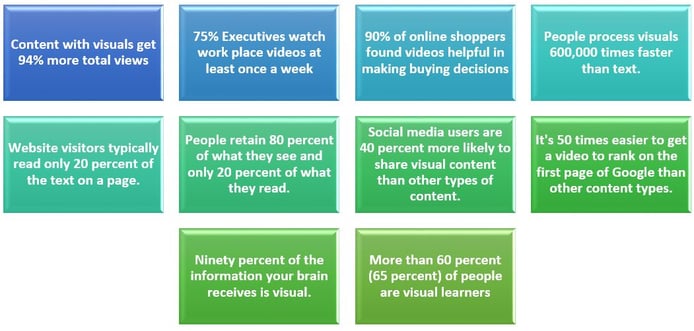Presenting Video as Part of your Webinar Presentation. It’s now a standard requirement
As a webinar platform vendor, we are continuously breaking new ground on how webinars are delivered and watched.
To deliver a great webinar from a technology perspective there are 3 key areas that are important:
- The functionality and ease of use in setting up a webinar
- The functionality and experience for presenters and moderators
- The functionality and experience for attendees
Getting the blend of these right is an evolving process for webinar vendors and requires technology the can be evolved as the technology landscape changes. This evolution has been made even harder for some by the advancement of internet and cloud computing power and the range of devices and standards available for the different aspects of a webinar.
Webinar Vendors typically come from 3 distinct backgrounds
- Desktop application vendors – Adobe, Cisco, Citrix
- Telephony and communication technology vendors – Talkpoint, ReadyTalk
- Webinar specific technology vendors – WorkCast, On24, Brighttalk
What is interesting in the evolution of webinar tools from these 3 sources is the approach taken by each of them to end up with a webinar tool.
In both 1 and 2 the evolution has been as follows:

What is evident is that all the functionality and experiences created by this approach has been focussed on 1:1 or 1: Few meeting experiences. This has meant the vast majority of these tools are desktop application based, run on proprietary networks and have rigid workflows for managing people.
In 3 the path has been different as the goal was never to build meeting technology but to build broadcast technology that met a specific requirement for the B2B market.

Vendors have been able to embrace the latest standards and build functionality that marketers running webinars really wanted rather than trying to ‘fit’ legacy technology to the requirement.
What has this got to do with Video in webinars?
Well the answer is quite a lot. As I have described above, because vendors such as ourselves have built our webinar products based on cloud based and streaming technology we have opened up the possibility of streaming video live. We are not bound by proprietary or legacy standards such as flash or the capability of the laptop that the application has to be loaded onto or indeed having to load an application onto a machine at all.
We can take advantage of the huge increases in bandwidth and cloud computing power to deliver video based experiences without any specialist equipment required.
Why is Video important anyway?
Lots has been written about the use of video in content marketing and the positive impact of buyer behaviour so it is not a surprise that the use of video in webinars is a hot topic.
Here are just a few of them:

What do we mean by Video in Webinars?
As a leading vendor of webinar technology we are constantly listening to our customers and the market on what they want from their webinar technology and a number of questions keep recurring.
- Can I use embedded video in my PowerPoint presentation?
- Can I play a video I have created to my audience as part of a webinar?
- Can I record my presentation and just play it back to my audience as live?
- Can I schedule a recorded webinar to play at a certain time and then just join for the intro and Q&A?
- Can I use webcams or Live AV feeds as part of my webinar or webcast?
All of these requirements are what we mean by video in Webinars but what is interesting is that the only 1 that can be done by 1 & 2 is the ability to switch a webcam on.
Webinar Technology has to meet the changing requirements
Webinars have been around a long time in one form or another but the momentum is not fading.
- The rise of Content marketing in the lead generation and lead nurturing process is driving marketers to do more blogs, webinars and infographics.
- The rise of Marketing Automation technology is making it easier to promote and drive attendance.
- The adoption of streaming and mobile devices means the audiences are larger and more dispersed.
- The increase in bandwidth means video is more accessible and easier to view
All of these dynamics are driving more webinars and more video and so webinar technology vendors need to keep pace.
Share this
You May Also Like
These Related Stories

Top 10 Tips for Presenting Webinars
How To Get More From Your Webinar Presentation Software


